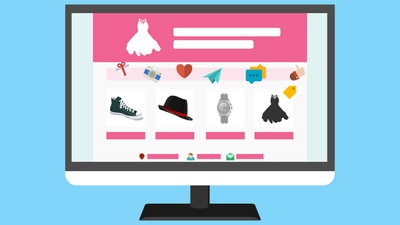In my previous articles, I have discussed what makes an effective homepage and five things to avoid on your home page. In this article, I will be looking at the first impressions visitors get when visiting your homepage.
The homepage is generally the first-page customers land on unless they come to a landing page on your site via an ad, an email or a direct search. The homepage is also the page on your site that most often gets the most traffic.
A homepage should show visitors what you do, your values, why you are unique, be up to date, and have a clear call to action. It should be abundantly obvious to someone who doesn't know you, who you are and what you do.
Your homepage must provide the key information visitors expect; by being clear and concise, you will likely see a reduction in bounce rates and an increase in engagement and activity.
Put yourself into your audience's frame of mind to get a better understanding of what their goals are when viewing your website for the first time.
What value do you drive?
When a new visitor lands on your homepage, first impressions count. You only have a few seconds to engage them, and therefore when it comes to website copy, less is more.
The most efficient way to build engagement is to explain your values, for example, what you do, whom you do it for, and most importantly: why.
You can easily communicate your values to your site visitors by sharing what problems you solve, for whom and how. You can also reassure visitors that they have landed on the correct site by being direct with your values. Be specific, explicit, and use client testimonials to help tell your story. Avoid being vague and generic when writing your values. Don't be afraid to change or update your values if needed so long as you stay honest and can back them up when asked. You can even try split testing to see which values resonate most with your visitors.
What makes you unique?
While your values may have got your visitor to stay on your site, rather than bouncing straight off, they may still be deciding if they should stay or go or somewhere else. Keep their interest by showing them why you are unique or better than your competitors.
What makes you different is more than just stating what products you offer. Think outside of the box and look at your work culture, beliefs, charity work you do or how you meet customers' specific needs. By being authentic and showing what added value you bring to the table, people are more likely to stay on your site and, in due course, convert into customers. The ultimate end goal.
However, the most important thing to remember is to keep it accurate, do not make things up just to try and appear different!
Getting your values nailed has a transformative effect and goes beyond just your website homepage. Once you're confident in your value messaging, you can start to worry less about what the competition is doing, leaving you free to carve your own path, stand out, truly innovate, and be in a class of your own.
Is your homepage up to date?
There is nothing worse than landing on a homepage and seeing outdated or irrelevant information. It makes the visitor think that you are not monitoring your website, not to be trusted, or worse - you are not in business anymore.
In March 2020, when the UK went into the first national lockdown, many companies had to close or reduce their capacity. They updated their websites with a message saying something along the lines of, due to COVID-19 we are now closed or operating at a limited capacity. However, in 2022 most businesses are back to full capacity, and this message is no longer needed. If a visitor was to head to a website that still has that COVID message, they may head straight off to a competitor instead. Even better, display a message assuring visitors that you're operating business-as-usual if you are.
Ensuring your homepage is up-to-date and relevant is vital.
Call to action
The primary role of your website is to convert a visitor into a lead or customer. The homepage is often the first step on this journey and should have a call to action aligned with your visitor's stage in their decision-making process.
For buyers in the early stages of the buying cycle, use links that send them to relevant pages on your website. For buyers who are further along the buying cycle, use links to consultations and free trials. You are servicing all visitors by making sure you have a call to action for both new and established customers.
Again, put yourself in your visitors' shoes. Is the call to action, and the content leading up to it, enticing enough to prompt... action? If you're not sure, start to measure click-through rates (if you're not already) and make small changes to determine what gives the best results.




